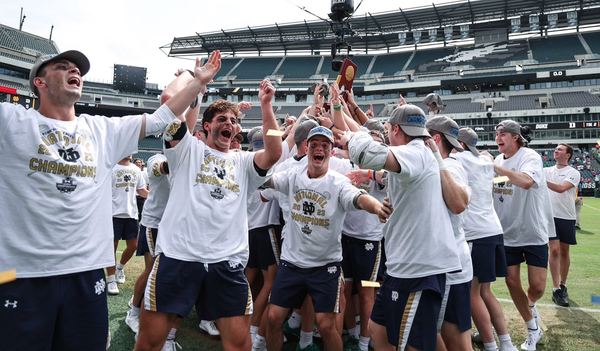
The GIST: Channel your inner Regina George and grab your lacrosse stick because this spring sport has exploded in popularity over the last decade, spreading from its East Coast roots to the Big Ten’s Midwest and beyond. Today, there are a whopping 530 women’s and 398 men’s NCAA lacrosse teams, and their fans’ obsession is growing by the day.
How it works: Lacrosse, aka lax, is much more than airborne field hockey. The timing and objectives are the same, but lax only fields 10 athletes per team. And instead of only shooting from a designated area around the goal, lax players can never score from inside the opponent’s goal area, aka the crease. They also have mere seconds to shoot: 90 for the women, 60 for the men.
- There are also lots of rules around fouls and checking (of both the stick and body varieties), and lax has its own spin on ice hockey’s power play. Limiting contact is even stricter in the women’s game, which is why the gals wear less protective gear.
- Games can’t end in draws, so four-minute, sudden-death overtime periods are used in which the first team to score wins, no matter how much time is left on the clock. No pressure.
The women’s powerhouses: UNC also crushes it in lax, although their three program titles don’t come close to Maryland’s record 14 and Northwestern’s eight since 1982’s first NCAA tourney. Last season, Northwestern took the ’ship with a stunning 18–6 win over Boston College, who’ve been to the title game six straight seasons but have just one natty to show for it.
The men’s dynasties: Syracuse’s 11 titles lead all schools since NCAA competition began in 1971, but the Orange haven’t won a natty since 2009, relinquishing that dominance just as their women’s team began to rise. Parity’s clearly up the men’s game: In the years since Syracuse’s last ’ship, there have been five first-time champs, including…
- Notre Dame took their first program title this May, beating out bitter ACC rivals Virginia and Duke in the national tournament. Those three teams danced around each other in the nation’s top three spots all season long, rarely losing to anyone but each other.
Enjoying this article? Want more?

Sign up for The GIST and receive the latest sports news straight to your inbox three times a week.